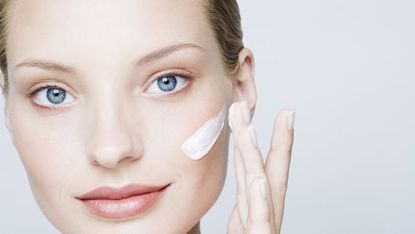

The day I learned that two of my strongest vices, spicy food and red wine, were triggers for rosacea was gut-wrenching, to say the least. It was an instant catch-22, of course, but also made me realize how little I knew about a skin disorder so common (it effects over 16 million Americans).
Since that fateful day, I'd been conscious of how my lifestyle plays into my mild case of rosacea, but still found myself with so many questions. Finally, I looked to Dr. Carlos A. Charles, MD, founder and Medical Director at Derma di Colore, to not just break the news to me about what other vices that contribute to rosacea, but also learn how I can adjust my daily activities, diet, and skincare routine. But full disclosure: I'm not ready to eschew my Thai takeout just yet.
MC: What activities cause rosacea?
Dr. Charles: While the definitive "cause" of rosacea is not completely understood, there are many internal and external factors that can trigger and/or exacerbate the condition. Most activities that lead to increased circulation can trigger rosacea. This includes physical activities such as working-out, jogging, spinning and yoga. However, keep in mind that rosacea can also be stimulated by emotionally stressful situations accompanied by minimal physical activity.
MC: What food and drinks are working against me?
Dr. Charles: Several foods and drinks exacerbate rosacea, including: spicy foods, hot coffee or tea, and alcoholic beverages. Unfortunately, it seems that many of the foods and drinks that we so enjoy can bring out the facial redness of rosacea. With regards to coffee or tea, it is more likely to be the heat emanating from the liquid that leads to the flushing and rosacea flare and not so much the ingredients within the drink. Additionally, sugary and starchy foods, which represent a high carbohydrate/ glycemic diet, can lead to increased inflammation. These can result in rosacea flares and should be avoided as much as possible.
MC: What can I incorporate into my diet that will soothe rosacea?
Dr. Charles: There are several general guidelines for foods/drinks that help soothe rosacea. Look for high quality proteins such as those found in fish, poultry, shellfish and tofu. Healthy fats can be beneficial, such as those found in cold water fish, seeds, nuts and olive oil. Lastly, low glycemic carbohydrates can be helpful by minimizing the inflammatory glycemic response associate with high-glycemic sugary foods and starchy carbs. These low-glycemic carbs can be found in colorful fresh fruits and vegetables, whole grains such as oatmeal, and protein-rich beans and lentils
MC: What's an example of a 24-hour, rosacea-concious diet?
Breakfast: Oatmeal with plain Greek yogurt or skim milk along with fresh cherries, blackberries, bananas and blueberries.
Lunch: Grilled wild Alaskan salmon cooked in olive oil over fresh market greens.
Dinner: Grilled chicken cooked in herb-infused olive oil with fresh lentils and/or beans.
Snacks: Whole grains, seeds, nuts, fresh vegetables and fruit such as cherries, blackberries, and blueberries can all serve as excellent healthy rosacea-calming snacks.
MC: What role does emotional stress play?
Dr. Charles: The exact mechanism by which emotional stress exacerbates rosacea is not completely understood, however we do know that it can certainly worsen symptoms. Emotional stress likely leads to an increase in inflammatory mediators and greater circulation to the face causing facial redness and flushing. Keep in mind that prolonged emotional stress can worsen nearly many common skin conditions such as acne, eczema and psoriasis.
Stay In The Know
Marie Claire email subscribers get intel on fashion and beauty trends, hot-off-the-press celebrity news, and more. Sign up here.
Skincare:
Marie Claire: How does rosacea change from summer to winter?
Dr. Charles: Rosacea may improve somewhat in the fall/winter with the decrease in UV rays versus the warmer months. However, one must use emollient rich moisturizers and gentle cleansers with ingredients such as ceramides in the winter to prevent rosacea flares cause by exposure to the excessively dry winter air and space heaters. Additionally, the daily use of a moisturizer with a physical block sunscreen remains important.
MC: Why is SPF so important for avoiding rosacea flare-ups?
Dr. Charles: Rosacea is one of many photosensitive dermatologic conditions, in other words, ultraviolet rays from the sun can lead to flares. Therefore, sun protection with SPF is of utmost importance for people with rosacea. Individuals with rosacea must pay special attention to the type of sunscreen they use. Sunscreens containing physical blockers such as zinc and titanium dioxide are less likely to exacerbate rosacea prone skin than chemical blockers such as avobenzones and benzophenones. Examples of sunscreens containing physical blockers include Elta MD UV Daily and UV Clear, as well as Blue Lizard.
MC: What overnight treatments do you recommend?
Dr. Charles: The best overnight treatments for rosacea include those that work to minimize inflammation. Two treatments that come to mind are Elidel (Pimecrolimus) Cream 1% and Aczone (Dapsone) Gel 5%. Aczone is indicated for the treatment of inflammatory acne but can have efficacy in the treatment of rosacea, particularly when combined with an oral antibiotic. Elidel is indicated as an anti-inflammatory topical medication for the treatment of eczema/atopic dermatitis. I have found success in using Elidel both alone and again in combination with an oral antibiotic. I favor these two topical medications as first line treatments for rosacea as they carry a low potential for irritation and worsening of the condition. Finacea (Azeleic Acid) Gel 15% can also be beneficial in the treatment of rosacea. Azeleic acid appears to slow the growth of skin bacteria and can reduce skin redness, as well as minimize and papules and pustules associated with some forms of rosacea. One must be cautious with Finacea however as it can sometimes cause increased irritation upon it's initial use.
MC: I've heard silk pillowcases are helpful. Is that true?
Dr. Charles: There is limited data with regards to the effects of pillowcases and rosacea severity. However, what we do know is that frequent washing of pillowcases can obviously minimize pathogenic bacteria that can exacerbate both acne and rosacea flares. Additionally, silk pillowcases may slightly decrease skin friction as opposed to other fabrics and thereby reduce irritation in the sensitive skin of individuals with rosacea.
MC: What facial treatments do you recommend for treating rosacea?
Dr. Charles: Facial treatments aimed to minimize facial redness can be beneficial for rosacea; these include treatments with long-pulsed dye lasers and Intense Pulse Light devices or IPL. However, keep in mind that rosacea is a chronic and persistent condition. Therefore, improvement by mechanical means can often be short-lived.
MC: What foundation and cover-ups are best?
Dr. Charles: One key element is to look for products with minimal ingredients to lessen the chance irritation. Products such as the "Un-Cover Up" from the forward thinking line RMS Beauty can be beneficial. However, always keep in mind that there are no one-size fits all solutions for rosacea skin.

Lauren is the former beauty editor at Marie Claire. She love to while away the hours at coffee shops, hunt for vintage clothes, and bask in the rough-and-tumble beauty of NYC. She firmly believes that solitude can be a luxury if you’ve got the right soundtrack—that being the Rolling Stones, of course.
-
 Olivia Rodrigo Is Bringing Visible Bra Straps Back
Olivia Rodrigo Is Bringing Visible Bra Straps BackThe pop-punk princess wore custom Victoria's Secret at Coachella.
By Julia Gray Published
-
 Meghan Markle’s New Netflix Cookery Show Begins Filming Today—But Not Where You’d Expect It to Be Shot
Meghan Markle’s New Netflix Cookery Show Begins Filming Today—But Not Where You’d Expect It to Be ShotThe Sussexes are having a busy week this week, shooting both of their his-and-her Netflix shows and rolling out the first product offering for Meghan’s new lifestyle brand American Riviera Orchard.
By Rachel Burchfield Published
-
 How I'm Redefining My Wellness Journey in 2024
How I'm Redefining My Wellness Journey in 2024Sponsor Content Created With The Honey Pot
By Aniyah Morinia Published
-
 The Bar Soap Boom Is Here
The Bar Soap Boom Is HereDespite endless body wash options, the art of luxury soap making hasn't slipped away.
By Sophia Vilensky Published
-
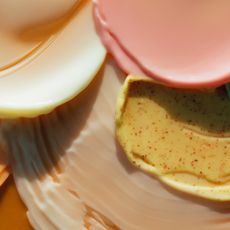 The 13 Best Products for Rosacea That Fight Redness and Irritation
The 13 Best Products for Rosacea That Fight Redness and IrritationFlare-ups are a thing of the past.
By Samantha Holender Published
-
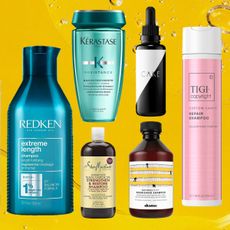 The 32 Best Hair Growth Shampoos of 2024, According to Experts
The 32 Best Hair Growth Shampoos of 2024, According to ExpertsRapunzel hair, coming right up.
By Gabrielle Ulubay Published
-
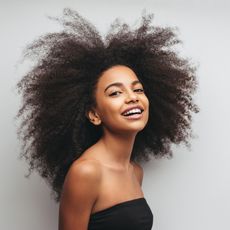 The 20 Best Hair Masks for Damaged Hair, According to Experts and Editors
The 20 Best Hair Masks for Damaged Hair, According to Experts and EditorsHealthy strands, here we come!
By Gabrielle Ulubay Last updated
-
 Selena Gomez Just Shared Her Entire Morning Skincare Routine on TikTok
Selena Gomez Just Shared Her Entire Morning Skincare Routine on TikTokThe most giving girlie.
By Iris Goldsztajn Published
-
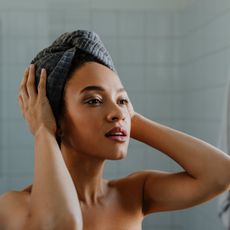 How Often You Should Wash Your Hair, According To Experts
How Often You Should Wash Your Hair, According To ExpertsKeep it fresh, my friends.
By Gabrielle Ulubay Published
-
 The 11 Best Magnetic Lashes of 2023
The 11 Best Magnetic Lashes of 2023Go ahead and kiss your messy lash glue goodbye.
By Hana Hong Published
-
 Beauty Advent Calendars Make the Perfect Holiday Gift
Beauty Advent Calendars Make the Perfect Holiday GiftThe gift that keeps on giving.
By Julia Marzovilla Last updated